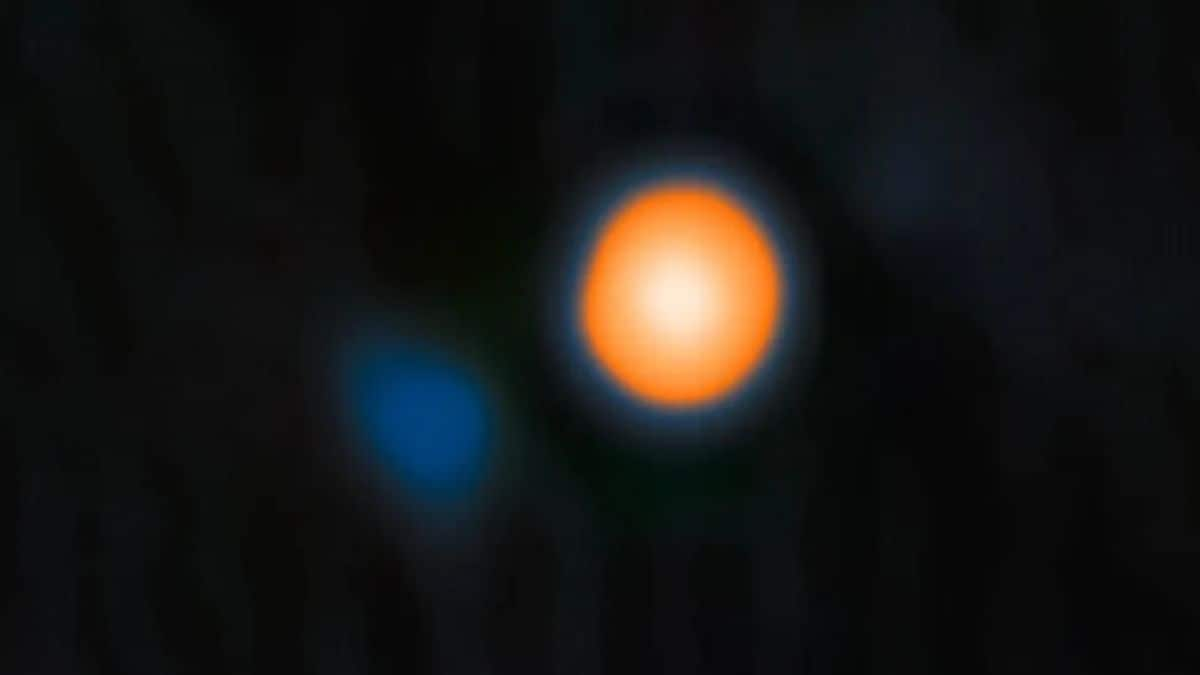
For the first time, astronomers have directly imaged a long theorised companion star orbiting Betelgeuse, the red supergiant famed for its dramatic brightness shifts visible to the naked eye. This elusive companion is believed to be the cause behind Betelgeuse’s puzzling six-year dimming cycle, a mystery that has persisted for over a thousand years. The star system’s newfound configuration, which features Betelgeuse gradually nearing the end of its life and a tightly orbiting blue-white companion, could also foretell a cosmic cannibalisation event in the distant future.
Gemini Telescope Unveils Hidden Companion of Betelgeuse, Solving Ancient Stellar Mystery
As per NASA’s announcement, the detection was made possible through observations by the Gemini North telescope in Hawaii, using the ‘Alopeke instrument. Lead scientist Steve Howell of NASA Ames Research Centre credited the telescope’s high angular resolution and speckle imaging technique for the breakthrough. Past efforts with the Hubble Space Telescope and Chandra X-ray Observatory had failed to reveal the companion. But Gemini’s short-exposure imaging pierced through atmospheric distortions to resolve the faint partner star.
The team found that this companion is roughly 1.5 times the mass of the Sun and orbits just four astronomical units from Betelgeuse—about four times the distance from Earth to the Sun. This makes it the closest detected companion to a red supergiant ever observed, existing deep within Betelgeuse’s extended atmosphere. Scientists believe the companion hasn’t yet ignited hydrogen fusion, suggesting it remains in an early stellar stage.
While the two stars likely formed simultaneously, their evolutionary timelines differ drastically due to mass. Betelgeuse, 700 times the size of the Sun, has aged rapidly, while the smaller star remains youthful. This disparity also sets the stage for a grim outcome: gravitational forces may eventually pull the companion into Betelgeuse, a fate predicted to unfold within the next 10,000 years.
The detection not only resolves Betelgeuse’s mysterious heartbeat-like dimming but also provides astronomers with a new path to study stellar evolution in red supergiants. Another clear view of the companion is expected in November 2027, when it reaches maximum separation from Betelgeuse. The findings were published on July 21 across two papers in The Astrophysical Journal.




